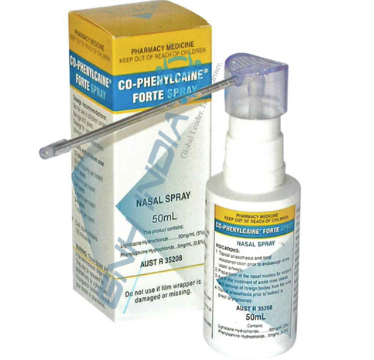Please note that the following is a general guideline/ discussion only.
Incidence
Nose Bleeds affect 60% population at some time in their lives. Most of them settle with no intervention. 6% need medical attention. The greater majority of the nose bleeds are called anterior epistaxis; in other words, bleeding that starts from the front part of the nose. These are not difficult to control and done in a clinic setting. Rest of the bleeds may occur from an artery from the back of the nose or due to nasal fractures from a vessel in the roof of the nose. These tend to be severe and generally require surgical intervention and packing of the nose. Rarely there may be multiple bleeders due to blood vessel abnormalities.
The septum- the site of common anterior bleeds. Here a lot of small vessels converge.
This where your surgeon is likely to cauterise
important Points
Anterior Bleeds: starts from the front of the nose, Common, may bleed on and off many occasions with no severe loss of blood. Usually, the patient is well enough to attend a clinic to have it treated.
Posterior Bleeds: Bleeding tends to start in the mouth and on both sides of the nose. These tend to be very heavy. These can a stop then start to haemorrhage slowly. As these are arterial bleeds, patients require URGENT admission to ED and nasal packing.
Underlying conditions: Conditions as HHT ( a familial blood vessel abnormality-see picture below), conditions which affect coagulation. These patients need to be be packed with Rhino (see below)/ referred to ED, coagulation need be corrected, if safe to do so.

HHT PATIENT. prominent vessels
If these was a recent nasal fracture. These bleeds can be from the anterior ethmoidal artery (on the roof of the nose) and need surgery to stop.
Controlling Epistaxis
A Equipment Used
1 Co phenylcaine spray-to numb and decongest the nose
2 Adrenaline 1/1000 mixed with 4% xylocaine 1:3 to soak a cotton wool strip
3 Nasal suction-to suction clots if needed
4 Nasal packing forceps- to pack medicated dressings in to the nose
6 Nasal speculum-to get a good view inside the nose.
7 Head Lamp- used to direct light inside the nose.
8 Endoscope- to further look inside the nose


B Nasal Prep
Nasal Prep- important aspect: this will control the bleeding, anaesthetise the nose and reveal the bleeder.
Use of a headlight to correctly to direct light inside the nose. Use of a speculum to correctly to expose the septum.

Placement of rolled out cotton soaked in prep to further decongest and anaesthetise

Correct way

Wrong Way-pointing upward
C Identification of the bleeder and controlling
Once correctly prepped, the bleeding vessel will standout, rest will blanch. This then could be cauterised by using cautery sticks
Afterwards, ointment or dressing with ointment could be applied.
D Cautery vs Packing
Cautery should only be done when a prominent vessel is seen.
Packing with a soft pack: if excessive anterior bleeding, not controlled by cautery.

Correct angle of insertion
Larger packs: If suggestive of a posterior-arterial epistaxis. If so likely packing with a posterior pack or a balloon catheter as below.

This is a posterior pack (not a catheter). This shows how it compresses the Spheo-Palatine Artery SPA to control a posterior epistaxis
E Anticoagulants
If anti coagulated these patients will not be excessively cauterised.
What Patients Should Do After Cautery
1) Avoid hot-long showers. Have short warm showers
2) Do not bend forward
3) Do not lift heavy objects. Do not strain.
4) Use the ointment prescribed. Apply with a cotton tip three times a day up to a week
5) Use FESS spray longer term to keep the nose clean and avoid crusting and infection.
Comments